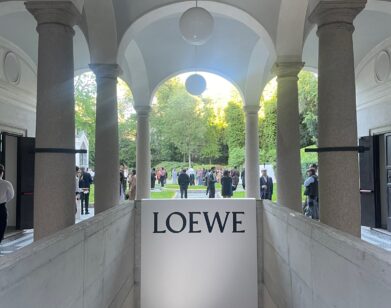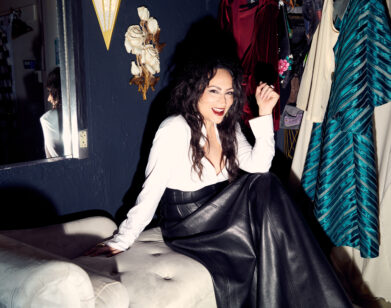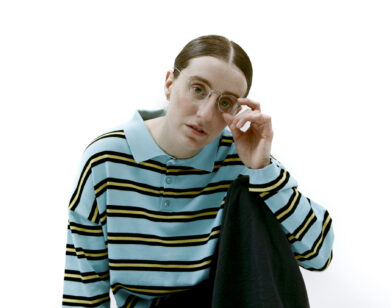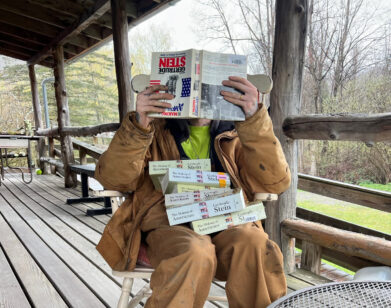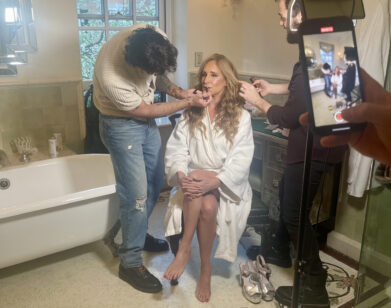David de Rothschild
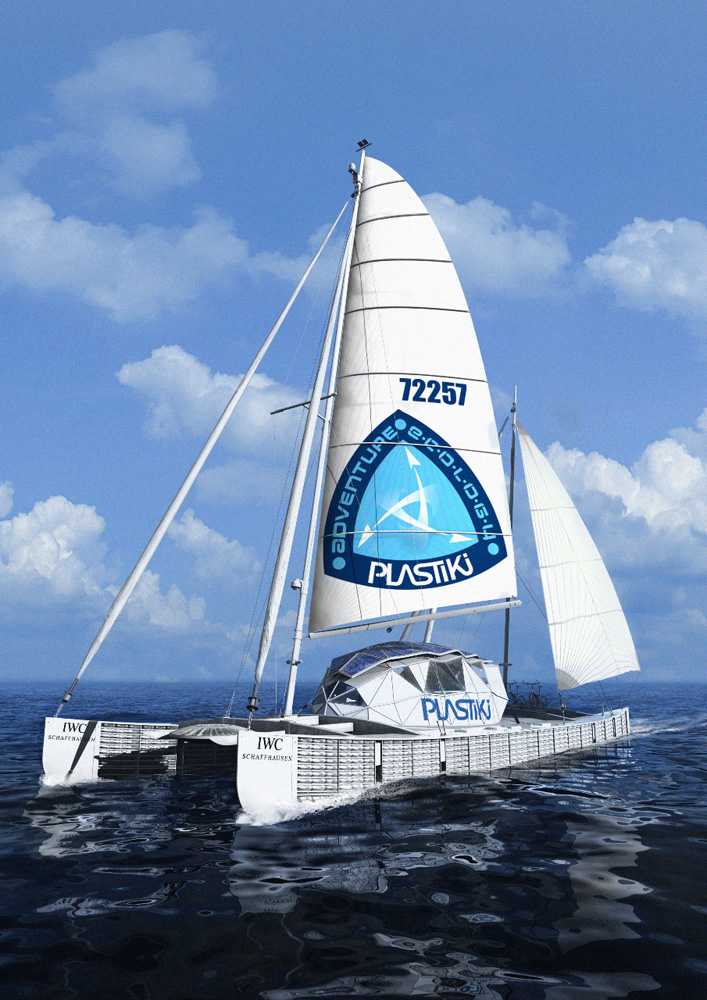
Later this summer, banking heir and adventurer David de Rothschild will sail the Pacific in the ultimate green dreamboat, The Plastiki—a sustainable, Web-interfaced vessel made of recycled plastic bottles and reusable plastics. De Rothschild plans to sail the ship from San Francisco to Sydney,Australia, making his way through the Eastern Garbage Patch—a stinking mess of marine debris that makes the dumping grounds of the Jersey shore look like Tahiti. The environmental nightmares the vessel encounters en route will be documented online. But amidst the muck, The Plastiki will be an oasis of innovative sustainable living—a traveling green island of sorts—with the 30-year-old de Rothschild and his crew pedaling stationary bikes to generate clean energy.
A member of one of Europe’s oldest banking families, de Rothschild grew up in England, basking in the nomadic spirit of his uncle PeterRobeson, an Olympic equestrian. Upon graduating from Oxford Brookes University and later earning a diploma in natural medicine, he set out on his own far-flung adventures under the auspices of Adventure Ecology, an environmental and education expedition outfit that he founded in 2004.
I recently caught up with de Rothschild in San Francisco as he oversaw completion of The Plastiki at the city’s Pier 31. Swathed in an orange-sherbet cashmere sweater and sporting a full beard—an accoutrement as identifiable with the Adventure Ecology brand as it is with ZZ Top—he discussed his most ambitious expedition to date.
EMILY JEROME: Tell us about Adventure Ecology (click to view to site). What are its goals?
DAVID De ROTHSCHILD: We started Adventure
Ecology to create a global network or a community where people could learn, share, and act and speak on the issues of the environment in the broadest sense—not just in connection with climate change, but everything that it encompasses.
JEROME: I understand that Adventure Ecology’s target is a younger demographic, so it seems like you’re positioning yourself as a new kind of role model for kids—forgive me, but as the hip, handsome, rich, environmentalist-adventurer.
De ROTHSCHILD: I don’t know if I’m trying to be a role model . . . per se. [laughs] But I think I’m trying to create a forum where discussion of these subjects isn’t stuffy and sanctimonious—where it doesn’t need to be filled with the sort of doom and gloom and scientific kind of dryness that has often been embedded throughout the environmental community. The environmental movement as a whole has externalized itself by becoming a thing. It’s like, “Oh, I’ve biked to work, and I’ve brushed my teeth, and I’ve done that ‘green’ thing.”Environmental action has to become habitualized, rather than, “Oh, I must do that chore.” It’s still pitched as something you have to go outside of your life to do.
JEROME: How did you conceive of The Plastiki?
De ROTHSCHILD: I was reading a report about a plastics iteration that the United Nations had put out back in June 2006, and there was a comment in there that just sort of stuck in my mind about how there were something like 46,000 items of plastic on every square mile of our oceans. So I googled plastics and marine debris, and very few articles came up. But one of the ones that did was from the Algalita Marine Research Foundation,which was founded by Charles Moore. He was writing about how on a sailing trip, he traveled through this area that he was calling theEastern Garbage Patch, which basically has a six-to-one ratio of garbage to plankton. So my mind started to kind of play on this whole thing . . . I had recently gotten back from an expedition to the North Pole, where I lived on the Arctic Ocean for more than 100 days, but when we talked to people about it, they seemed to feel so removed from what we’d done. Even I felt removed. I mean, you go up to the North Pole, and you’re talking about inert gases in our atmosphere and melting sea islands . . . It’s so abstract. I really felt that the next issue that we championed for Adventure Ecology had to have a personal resonance with people. No matter what the expedition was, there had to be a personal thing where people could do something about it. Waste is an issue that we all contribute to, so we decided to do something that involved that—waste and peoples’ everyday consumption habits. So I said, “Well, why not build a boat made out of waste to go out and document waste?” And that’s how it started to evolve. I was thinking, What was one of the greatest ocean adventures of all time? Thor Heyerdahl’s raft, The Kon-Tiki. So I was kind of like, Oh, The Plastiki. And then we developed and refined it from there. JEROME: Are you aware of another similar expedition dubbed The Junk Raft that sailed last year from Long Beach, California, to Hawaii?
De ROTHSCHILD: Very much so.
JEROME: And how do feel about that expedition?
De ROTHSCHILD: I have always said that anybody who does anything to help raise consciousness and push sustainability is great in my eyes. I think it is a shame that somewhere along the line there was a miscommunication between myself and Marcus Eriksen, who was doing that other vessel. I knew about it because National Geographic contacted me and said, “By the way there’s somebody out there who wants to do a thing called The Plastiki . . .” And I was like, “Really?” So I rung up the guy and said, “Look, what’s going on?” And he said, “Oh, I didn’t knowyou were doing it.” So I said, “Well, I didn’tknow you were doing it. Why don’t we join forces?” After that, we didn’t hear anything. And then, a year later, I read about this raft setting sail . . . On the surface of things, it’s a great adventure that they did. But what we’re doing is worlds apart. Our vessel has been almost three years in the building, and a lot of science has gone into the materials and the design. We wanted it to be a boat. What I didn’t want to do was call it “junk,” because the perception of junk is that you throw it out. I wanted to get people to think of waste as a resource. We also need the boat to perform as a vessel, as opposed to something where we’re at the mercy of nature, just hoping that we can make it to the island. But I think what’s happened is that there’s an air of competition that sort of arises between green groups . . .
JEROME: Do you feel like there’s competition here?
De ROTHSCHILD: No . . .
JEROME: Or some sort of dispute about the originality of the idea?
De ROTHSCHILD: No, no. I would say that in the context of the story we’re telling and the way we’ve done it, what we’re doing is 100 percent original. But is building a boat out of bottles original? No—not for me, not for Marcus, not for anybody. So I don’t look at it as a competition. I look at it as a way to create a bigger platform for projects in this arena, which is only good for everybody.
JEROME: Because these issues go beyond ego . . .
De ROTHSCHILD: Yeah, definitely. There are a lot of people who will say, “Well, why do you bother? Aren’t there easier ways to engage people?” But that’s not an argument to me. Would you rather I do nothing? Here’s an opportunity to pull together a group of people that’s much bigger than just me, much bigger than Adventure
Ecology, into a kind of movement. In a way, the expedition is the least exciting bit. The exciting bit is creating a forum for discussion, a platform for solutions. That, to me, is far more engaging than if we just sail from point A to point B.
JEROME: Do you think that doing this expedition as David de Rothschild—banking heir—gives you an edge in terms of getting your message across?
De ROTHSCHILD: I think, at the end of the day, there’s only so far that a name can carry you. It might open a door, but it all unravels very quickly if there isn’t any substance behind it.
JEROME: So you feel that your efforts are—
De ROTHSCHILD: They’re not necessarily my efforts. I would say they’re the efforts of everybody involved on the team. People say, “Oh, you’re David de Rothschild and your family is synonymous with business, and blah blah blah . . .” And I’m proud of my heritage and where I come from, but at the end of the day, people will only remember you for what you do, not for what you’re called. I could follow another path and go off in my suit everyday and sit there and trade invisible money, and then walk home every night and just get on with my life. But I do this because I want to make a difference.
JEROME: And your funding?
De ROTHSCHILD: It’s 100 percent sponsored. I’ve invested money into Adventure Ecology, which is my organization and my company, but the expeditions are all sponsored. We can’t do them without sponsor money.
JEROME: Let’s talk about the expedition itself for a moment. Are you proud to be starting from the first city in America to ban plastic shopping bags from grocery stores?
De ROTHSCHILD: It’s great, isn’t it? The mayor of San Francisco, Gavin Newsom, has been a real pioneer when it comes to the environment, amongst other things. It’s funny, because a lot of people have said to me, “Why San Francisco?” And I would say, hand on heart, that a lot of it comes back to the mayor. I was very fortunate to meet him. I explained to him, “I’m doing this great project.” His instinct was kind of just like, “I get it. You should come here, and you should be building this in a city that’s pioneering.” He was definitely down with it.
JEROME: Will every stop en route to Sydney highlight the issue of waste? Tell me your plan.
De ROTHSCHILD: We’re planning to head off from San Francisco and go down the coast toward San Diego and go to the Scripps Institute of Oceanography, which is our partner in this. Then we’re going to head across to Hawaii, and then swing through the southern end of the Eastern Garbage Patch. I wanted to sortof show this manifestation of plastic. The ocean is quite smart—it throws it out onto our beaches. One of these areas is Midway, which is north of the Hawaiian Islands. From there we’ll come across to the Marshall Islands, which is a chain of islands. Included in that is Bikini Atoll, which is where a lot of South Sea atomic testing happened. And then from there we’ll head on down through the different Pacific Islands to the village of Vanuatu, which is obviously known now because it had to evacuate all of its inhabitants—a whole country has basically had to move because of the rising sea level. From there, we’ll drop through a number of different islands and then end up sailing to Sydney. Again, though, I say all that with a disclaimer: There are probably going to be many unexpected stops along the way. Some of the biggest risks of marine debris are those massive containers that rock around on the sides of boats and then fall off. If we hit one of those . . . So there is a risk. But I don’t think it will stop us. [laughs] JEROME: Are you petrified?
De ROTHSCHILD: Not really, no. It’s a combination of ignorance is bliss, and also I believe in my team and the build of the boat.
JEROME: What kind of technological innovations will you be showcasing on this trip?
De ROTHSCHILD: Those are still evolving. We’re working with Hewlett-Packard. A lot of the stuff that they’re doing as lab-based technologies we’ll be implementing—hopefully—on the boat. It might be sensor technology. The way we monitor our presence on the boat might be to create an emotional graph of the journey. At certain points of the journey, our heart rates go up, and it will map that, and that will tie into a GPS and then tie into a photo, so you end up with this kind of visual-emotional map of the ocean. I also think we’re trying to showcase as many solutions as possible from an energy point of view. We’ll have a wind turbine. We’ll have a sea turbine. We’ll have solar panels. We’ll be pedaling bicycles. We’ll have waste energy systems.
JEROME: What are you going to do with the boat when you’re finished?
De ROTHSCHILD: We’re going to ask the community. The cabin was designed by Architecture for Humanity in this really cool way so it can fit within a container, so it will go off and act as the basis for an educational display.
JEROME: And the rest of the boat?
De ROTHSCHILD: What we’re doing right now is kind of a recyclability matrix. It has different grades of recyclability. With this smart plastic that we’re using, there’s no reason why we can’t create fully recyclable surfboards or canoes. If you look at the natural world, there’s no such thing as waste, so we need to mimic nature, which operates on this closed-looped cycle.
JEROME: You’re going to be composting the human waste generated by The Plastiki and actually spreading it on passing islands as fertilizer. How does your family feel about de Rothschild feces being spread about the globe?
De ROTHSCHILD: You know, the good news is whether you’re called de Rothschild or not, our shit all smells the same.
Photos: David de Rothschild in San Francisco, March 2009. | A rendering of The Plastiki. Image © Peter Rubin.
Emily Jerome is a writer and photojournalist based in New York and Los Angeles. She recently served as a correspondent in Havana, Cuba, for The Economist.

